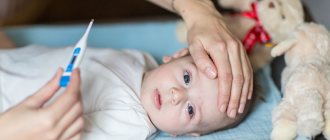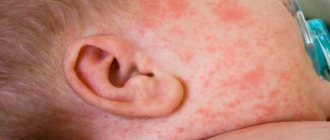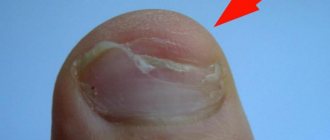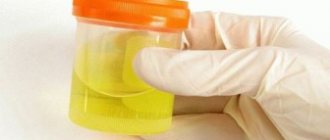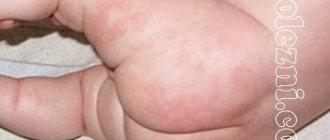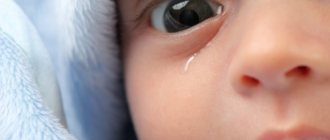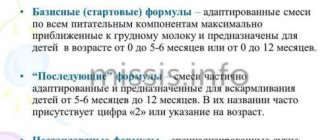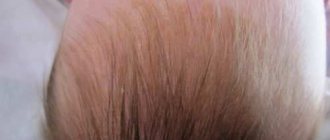What can cause bronchitis in a baby ? The occurrence of bronchitis in infants should not be underestimated, because even slight swelling of the mucous membrane of the respiratory tract and the appearance of some mucus can lead to a decrease in air access. The child has rapid breathing, he breathes with obvious effort. Since insufficient oxygen enters the bloodstream due to inflammation of the bronchi, the baby should be sent to the hospital, where he will be given antibiotics and, possibly, oxygen for breathing.
Causes of bronchitis in a baby
Bronchitis refers to diseases of the respiratory system. It often occurs in infants and young children. Most cases are recorded in late autumn, early spring and winter, since during these periods the body is usually weakened. The development of the disease is facilitated by factors such as cold air, staying in crowded places, and insufficient ventilation of rooms. Viruses that cause bronchitis damage the epithelium and infect the mucous membrane of the lower respiratory tract, facilitating the penetration of bacteria from the nasopharynx into the bronchi. Bacterial infections are treated with antibiotics.
Examining a smear from the mucous membrane of the throat and nose helps determine a child’s bronchitis is caused A positive test result for respiratory secretions indicates the presence of a bacterial infection. Sometimes bronchitis can also be caused by non-infectious factors - such as allergies, asthma, obstructive pulmonary disease, inflammation of the mucous membrane caused by toxins. Allergens and toxins destroy the mucous membrane of the throat and bronchi, contributing to the occurrence of chronic inflammation.
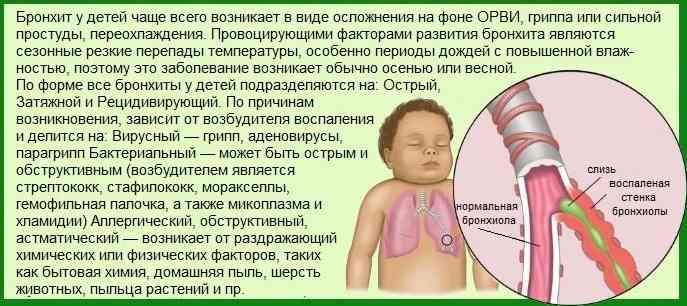
It happens that bronchitis is a complication after influenza, laryngitis or measles. In this case, the disease is accompanied by high fever and myalgia. Inflammation of the bronchi caused by viruses is often accompanied by inflammation of the conjunctiva and photophobia.
Symptoms of bronchitis in infants
Three to four days before the appearance of obvious symptoms of bronchial inflammation, a runny nose occurs. Then a cough begins - first dry, then wet (this is due to the secretion of secretions in the respiratory tract, the presence of mucus). Babies cannot get rid of the mucus that forms, so they usually swallow it. Sometimes vomiting occurs. During breathing, characteristic wheezing , which indicates poor bronchial patency. The temperature rises, the child loses appetite, the baby wakes up at night and cries, behaves restlessly, and abdominal pain may occur. Breathing problems are noticeable when the child breathes. Chest retraction combined with shortness of breath are quite rare.
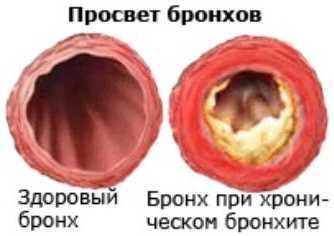
the symptoms of bronchitis appear slightly. As the infection gets worse, noises appear in the lungs, whistling or wheezing can be heard when breathing. Bronchitis can be acute or chronic. Acute bronchitis begins unexpectedly, suddenly, but it does not last long. About a week after the illness, the bronchial epithelium is restored, but the cough may persist for some time - attacks usually appear in the morning. Chronic bronchitis requires quite a long treatment.
Treatment of bronchitis in children under one year of age
Mothers treat diseases of their newborn with particular caution. For example, bronchitis in children under one year of age is more severe than in adults and is accompanied by dangerous symptoms.
How to cure it in an infant as quickly and safely as possible, and how to understand that bronchitis is going away?
Causes
The causes of bronchitis can be:
- Viruses.
- Bacteria.
- Allergens or toxic substances.
Most often, bronchitis develops as a consequence of acute respiratory infections and is viral in nature.
Bacterial bronchitis appears as a complication of viral bronchitis as a result of the addition of bacterial flora. It is very important to understand what type of bronchitis your baby has in order to begin proper and effective treatment.
Classification
According to the clinical course, the following types of bronchitis :
- Spicy . Symptoms increase rapidly, including general malaise and fever. The treatment is effective, symptoms disappear within 2-3 weeks.
- Obstructive . Bronchitis, in which the lumen of the bronchi narrows and leads to respiratory failure. It is very important to diagnose this form in infants in a timely manner, because treatment is carried out mainly in a hospital.
- Chronic . Cannot occur in infants.
Symptoms
Symptoms of bronchitis:
- It may begin with general symptoms of a viral infection: fever , redness of the throat , weakness .
- a dry, frequent cough appears , which causes anxiety to the child and can be paroxysmal in nature . Then the cough turns into a wet one , but the sputum, as a rule, is poorly separated .
- Wheezing and whistling can be heard without a phonendoscope .
Dangerous symptoms are:
- Blue discoloration of the nasolabial triangle.
- Dyspnea.
- Lack of air, difficulty breathing.
In such cases, you need to call an ambulance and continue treatment in a hospital under the supervision of doctors. If a child has an attack of suffocation, humidified air will help to help wait for doctors. You can do this using a humidifier or an open hot water tap in the bathroom.
The danger of obstructive bronchitis
Treatment of allergic and infectious bronchitis in children under one year of age is recommended in a hospital. The fact is that coughing and sputum production often lead to life-threatening attacks.
The respiratory tract of infants is much narrower than that of adults , so any inflammatory swelling or accumulation of sputum causes narrowing of the bronchial lumen and respiratory failure.
How to recognize bronchitis
Possible causes of cough for an infant, taking into account one month's age, are described below. However, this is only a guide; an accurate diagnosis is made based on the results of blood and listening to the child.
At the age of 1-3 months, the baby receives immune protection through mother's milk, so viral infections rarely provoke any diseases. A child's cough at this age may be associated with an allergic component or insufficient humidity in the room.
Parents should pay more attention to ventilation, wet cleaning and maintaining the right climatic conditions.
At the age of 4-6 months, infants begin to cut their first teeth. This is often accompanied by increased production of saliva, which the child tries to cough up. This cough is usually wet, the sputum comes out well and is accompanied by rhinorrhea. The doctor must make an accurate diagnosis after listening to the bronchi and examining the baby.
From 6 to 12 months, children encounter the first infections and begin to get sick. At this age, infectious bronchitis is most likely. It can be recognized by typical symptoms: increased temperature, decreased activity of the baby, wheezing.
Complications
Treatment of bronchitis should be carried out to the end, without interrupting treatment. Otherwise, you may experience the following complications:
- Pneumonia.
- Transition of inflammation into a chronic form.
- Bronchial asthma.
- Respiratory failure.
Bronchiolitis
This is a disease that affects the smallest parts of the bronchial tree - bronchioles . This diagnosis is very dangerous ; irreversible tissue changes can occur in the bronchioles, which will lead to impaired blood circulation and breathing. Symptoms :
- Dyspnea.
- Weakness.
- Lack of air.
- Cyanosis.
Prevention
Considering the importance of the respiratory system for the human body, it is better to take care of its health constantly. Preventive measures will keep the child healthy and prevent many diseases:
- Eliminate any potential allergens from the home.
- Daily wet cleaning and ventilation.
- Maintaining optimal temperature (20 degrees) and humidity (60%) in the room.
- Make sure your baby drinks enough fluids.
- Hardening, walks in the fresh air.
- Holidays at sea.
When planning a pregnancy with chronic bronchitis, the mother must first cure her disease. How dangerous is bronchitis during pregnancy? The infection can be transmitted to the baby and cause miscarriage or developmental defects.
If you notice signs of poor health in your baby , do not try to figure out the reason on your own.
A qualified doctor will make the correct diagnosis and tell you how to treat bronchitis in children under one year old quickly and safely.
We discussed above how to recognize the signs of bronchitis. The earlier treatment is started, the more likely it is to carry it out at home.
Treatment of bronchitis in children
Dr. Komarovsky will tell you how to properly treat bronchitis in children.
Source: https://bronhit.guru/bronhit-u-detej/grudnichka/do-goda.html
Treatment of bronchitis in infants
You should remember the need to constantly humidify the air in the room where the sick child lives. It is necessary to minimize the number of his contacts with sick people, it is necessary to isolate the baby from the toxic effects of tobacco smoke. Do not expose your child to sudden changes in temperature. During treatment, aerosol therapy is used, in particular. It is also recommended to use drugs to thin the mucus in the bronchi. Antitussive syrups should not be given because they will interfere with the removal of inflammatory secretions.
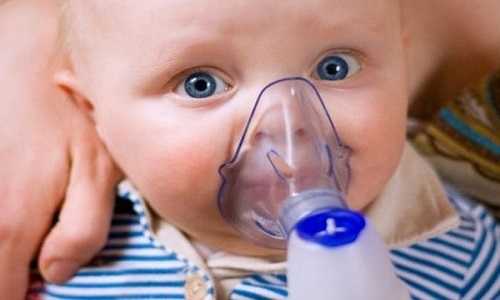
When treating infants antibiotics are mainly used , since the infection is predominantly of bacterial origin. The decision about the need for such therapy will be made by the doctor. Be sure to give your child the prescribed antibiotic in the doses prescribed by the specialist and for as long as the pediatrician indicates (even if you think the symptoms have already disappeared). If bronchitis occurs as a result of a viral infection, treatment with antibiotics is usually not carried out. The doctor must assess the general condition of the child. If there is a high temperature, the baby should take antipyretic drugs in the form of syrup. It is also necessary to remember that the child should drink a large amount of liquid - breast milk, water, diluted juices, compote. In small allergy sufferers, inflammation of the bronchi often leads to a narrowing of the airways, and the baby may have breathing problems. Obstructive bronchitis occurs. The child should receive medications that dilate the bronchi; inhalation is recommended.
In addition to taking medications, you can also use some proven ways to combat the symptoms of bronchitis in infants:
- place the baby in the crib so that his head is higher than the rest of the body (this should make breathing easier),
- use inhaled airway moisturizers; You can spray sea water indoors from time to time; when a debilitating cough begins, take the child into a steamy bathroom for about 5 minutes - you can add a few drops of eucalyptus oil or a pre-prepared decoction of chamomile or sage to hot water.
Children with chronic diseases or low immunity may experience complications from bronchial inflammation. The most common complications among newborns: pneumonia, pneumococcal infection. With chronic bronchitis, hypertrophy of the right ventricle of the heart, obstructive pulmonary disease, emphysema, increased bronchial reactivity, and asthma may also occur.
Bronchitis in a baby - video
Bronchitis in infants: treatment and symptoms
5 (100%) voted 1
Bronchitis in infants: symptoms and treatment
Last modified 04/24/2017
Infants suffer from bronchitis quite often. The child breathes with difficulty, coughs and suffocates. Body temperature is greatly elevated. This is what worries parents most. If treatment is not started in time, bronchitis can lead to pneumonia. Timely treatment will allow you to cope with problems quickly and without dangerous complications.
Symptoms of bronchitis in children of the first year of life
The disease, as a rule, begins to develop after any infection or toxin enters the respiratory tract, damaging the so-called bronchial epithelium. As a result of such damage, breathing disturbances, swelling, and spasms occur.
The main symptoms of bronchitis in infants include the following:
- Increased body temperature;
- The appearance of frequent dry cough;
- Chest wheezing can be heard on both sides;
- The appearance of difficulty breathing;
- The appearance of shortness of breath
Treatment of bronchitis
When their baby detects any of the symptoms of this disease, parents immediately begin to ask the question: “How to treat this?”
The main methods of treating this disease in infants include the following:
1) Elimination of dry cough; 2) Conducting an active fight against various manifestations of infection; 3) Removing mucus from the lungs; 4) Removing swelling from the respiratory tract.
It should be noted that the process of treating the symptoms of this disease in children under one year of age can only be carried out by a medical specialist. This is explained mainly by the fact that various types of inflammatory processes in infants occur several times faster compared to older children.
For this reason, self-treatment can lead to very disastrous consequences. However, this does not mean that treatment of this disease in infants can only be inpatient.
Infants can also be treated at home, but after consulting a pediatrician and in full accordance with the doctor’s instructions. In this case, it is very important to carry out the full course of treatment prescribed by the doctor. Otherwise, bronchitis may develop into a chronic form. In advanced cases, this disease is treated with antibiotics.
Folk remedies for treating symptoms of bronchitis in infants
There are the following folk remedies for treating bronchitis in children: 1) Drinking plenty of fluids; 2) Steaming; 3) Inhalation; 4) Use of mustard plasters.
Let's look at each of these tools in more detail.
Drink plenty of fluids
A baby who suffers from a disease such as bronchitis should brew a chest tea. It is an excellent expectorant, and can be purchased at absolutely any pharmacy.
Steaming Children with bronchitis should take hot baths with the addition of various types of herbs that have an anti-inflammatory effect immediately before going to bed. This procedure should not exceed fifteen minutes . The optimal water temperature for baths is no higher than 37 degrees, but not lower than 34 degrees. As for the herbs used for steaming, the most effective are sage, mint, and chamomile. If you add two spoons of a special menthol solution to the bath, the baby will also receive inhalation at the same time as steaming.
Inhalation is considered the most effective and also the safest method of treating signs of bronchitis in children from the arsenal of traditional medicine, because it most actively contributes to the process of liquefying sputum. As preparations for inhalation, it is best to use any saline solution or ordinary mineral water. It is recommended to add infusions of medicinal plants such as eucalyptus and calendula to physiological infusions. And also onion or garlic juice.
Using mustard plasters To treat the symptoms of bronchitis in infants, the most common mustard plasters, sold in absolutely any pharmacy, are quite suitable. They should be applied to the chest and also to the back of the patient. In some cases, mustard wrap is used.
You will need:
- 1 tbsp. spoon of mustard
- 0.5 liters of water
- piece of fabric
- blanket
It is necessary to mix mustard with water, then soak a piece of cloth in the resulting solution, wring it out, wrap the child and wrap him in a blanket for 5 - 10 minutes.
Baby chest massage Chest massage should be noted as a separate method of treating babies.
However, this procedure must be carried out in compliance with the following recommendations:
- Before starting the massage procedure, give your baby an expectorant prescribed by a medical specialist. This will actively promote the process of mucus removal.
- The duration of the massage procedure should not exceed twenty minutes;
- The massage course must be at least five days;
- The process of performing the massage procedure should begin with light stroking, as well as light rubbing;
- Massage of the heart, hypochondrium, spine, and kidneys of a baby who suffers from a disease such as bronchitis is not allowed.
(Visited 94 times, 1 visits today)
